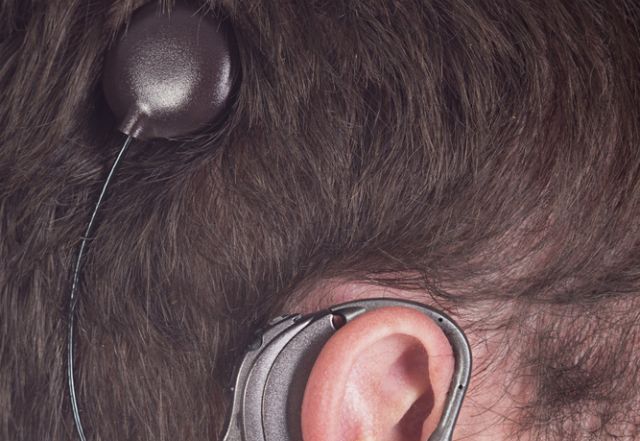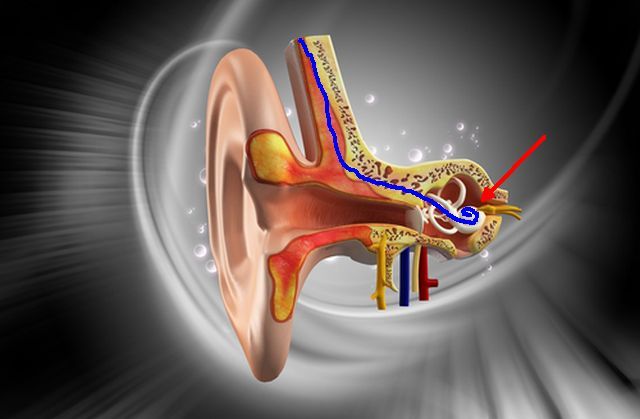Imagine a world where people buy products at the store by waving a hand near a sensor, where people "think" up a business report at work rather than typing one up, and where an augmented-reality gets projected in front of our eyes with specialty contact lenses. These ideas are closer to reality than you may realize.
It was only the 1980s and 1990s when science fiction movies portrayed people using handheld devices to navigate city streets or pinpoint one's own location on Earth. These movies had characters who would state questions to a disembodied computer, which would intelligently provide the answers. They showed families having video-chat calls using flat-panel displays that made the tech geeks of the 1980's drool.
In barely three decades, many of the things that science fiction writers could only imagine have become reality. Had someone predicted that these technologies would become reality this quickly, they would have been laughed at. Today, no one is laughing.
With the current trend of technical innovation and advancement, now is a good time to explore the state of the art in computer-human technologies, to try and gauge what the world may look like in the next 20 or 30 years.
Implanted Microchip ID
In 1998, British scientist Kevin Warwick had himself implanted with an RFID transmitter to prove out the concept of controlling doors, lights and other devices simply by walking nearby. By 2000, Warwick was able to interface his implant with his own nervous system, allowing him to remotely control a robotic arm. This experiment was detailed in a February 2000 Wired article.
Yes, the technology was real and quite viable back the, and by 2004 the FDA had approved VeriChip, the branded computer chip implant manufactured by Applied Digital Solutions, to be used for medical purposes.
While one would expect the ability to implant a rice-sized RFID device just under the skin of a human to spark a proliferation of products and services enabling card-free and paper-free human identification in places like hospitals, bars and for store purchases - that isn't at all what happened.
In fact, the backlash was tremendous. Privacy advocates raised alarms about the ability for hackers to intercept someone's RFID signal and duplicate the device in order to steal someone's identity (a real concern). Religious extremists proliferated content all throughout the Internet forewarning that VeriChip signaled the approaching Armageddon and the "sign of the beast" (666).
The public outcry against the technology was so great that PositiveID, the company that owned the VeriChip brand in 2010, discontinued all marketing for the product. The public simply was not ready to embrace widespread implanted identification.
Still - the technology and it's use is moving forward. Legions of body modification "grinders" are actively injecting these things between thumb and forefinger.
One such body hacker by the name of Amal Graafstra got one of the implants, and actively chronicles his installation of various RFID toys that he remotely controls with his implant.
I see Amal's kind of love of implanted technology growing throughout society, while I see the superstitious fear of it fading away just as fear of most other inventions have faded away over time.
Electronic Hearing Implants
I'm also convinced that implants are going to become integrated with all of our senses, as a way for humans to enhance those senses through the use of advancing computer technologies. As computer systems become more miniaturized, the possibilities in this area multiply.
Take, for example, the field of cochlear implants.
These devices have external processors that is held to the under-the-skin implant by a magnet. The processor transfers audio signals to the implant, which then transmits those signals to an electrode array that gets surgically inserted deep into the cochlear itself. The implant bypasses that part of the cochlear that doesn't work, and electrically stimulates the nerve fibers to reproduce the sounds.
Today, this kind of surgery seems pretty invasive and extreme, but imagine the day when wireless technologies allow a person to have a single implant inserted into the cochlear, and then a transmitter worn anywhere on the body, or implanted somewhere on the ear itself, could transmit sound directly to the cochlear without any wire necessary.
Seem far fetched? It's not. Just this year, MIT researchers developed a new microchip that could be implanted into the ear, which could use sensors to detect ossicle vibrations in the inner ear, convert those to an electrical signal, and send that to the electrode inserted into the cochlea. By lowering the power needs of the device, the researchers proposed that the device could be recharged wirelessly, removing the need for the hardware mounted externally on the skull!
In other words, the day of the undetectable bionic ear is here.
Contact Lenses - Bionic Eyes
Google Glasses is all the rage these days, but the real allure of this technology is the concept of augmenting human vision with external information. The idea of wearing a pair of gaudy glasses to accomplish this seems tolerable to many tech geeks, but how cool would it be to simply slip on a pair of contact lenses that accomplish the same thing, but only requiring a really cool-looking pair of shades?
This is exactly what a company by the name of Innovega introduced at CES 2014. That is, a contact lens that basically allows the light of a projected digital image to be superimposed upon the regular light of your normal vision, resulting in a "single integrated image".
The contact lens "tricks" the eye so that it can see a high resolution, large field-of-view display overlaying your regular vision. It's clearly the cutting edge of augmented reality technology, and if successful it will finally allow people to see high-resolution digital images and content in a way that Google Glasses just doesn't offer yet.
Who the winners will be in these arena is not totally clear just yet, but one thing that's for certain is that visual augmented reality is something that promises to completely transform the world, so long as the devices and the technology can be integrated with the human body in a way that is unobtrusive and tolerable.
Is Innovega on the right track with the use of contact lenses? Possibly, but only time will tell.
The Mind-Machine Connection
When I first heard about the mind-control game called Mindflex, I was initially disgusted. I've spent years writing about the pseudoscience behind all sorts of psychic claims, and here is a game being marketed to children as a "mind control" device. My first reaction was to try and debunk the device.
Wasn't I surprised to learn that Mattel was one of the first companies clever enough to integrate of EEG-style brain-wave reading technology into a game. In 2010, three neuroscientists tested the device to confirm it really works, and posted the video to YouTube.
The game really only detects the level of your brain waves which reflects your mental focus. The sharper your mental focus, the faster a fan turns, which in turn elevates a foam ball. It isn't quite mind control, but it's about as close as modern technology can get.
This may seem like it's just a game to improve your brain fitness, but is this actually a sign of more amazing devices to come? I think so, yes. In fact, a clue that this is happening came at the end of 2013 when University of Washington researchers sent one person's brain signal over the Internet, and used that signal to control the gross motor actions of a second person's hand at the other end of the UW campus.
The second scientist wore a specially designed cap with a transcranial magnetic stimulation coil placed directly over the part of his motor cortex responsible for hand movement. The brain wave "trigger" worked, and the second scientist's hand moved in what he described later as a "nervous tic".
The experiment highlights what the Mattel brain game had already proved - that brain waves can be measured and used to manipulate the world, without anything more than the power of your mind. The only question that remains now is how this new use of EEG technology will further integrate humans with the computers that we love so much.
Do you think the pace of human-machine interfacing will pick up in coming years? Can you think of any creative ideas for these technologies? Share your own thoughts and ideas in the comments section below!
Image Credits: Pixeled Barcode by Maksim Kabakou at Shutterstock, Ear anatomy by dream designs at Shutterstock, cochlear implant by Elizabeth Hoffmann at Shutterstock





